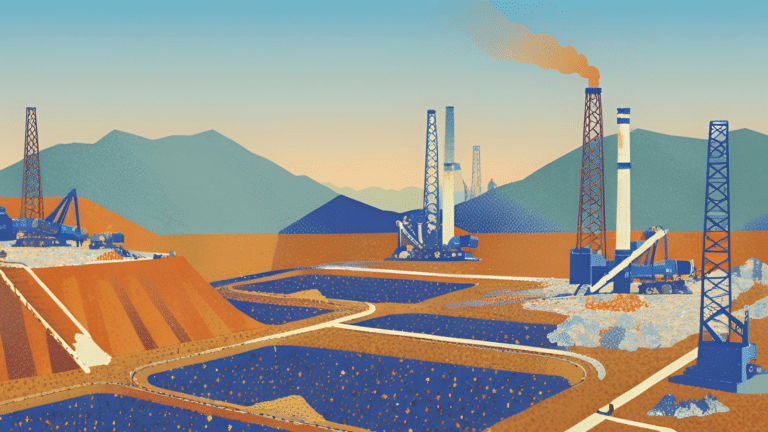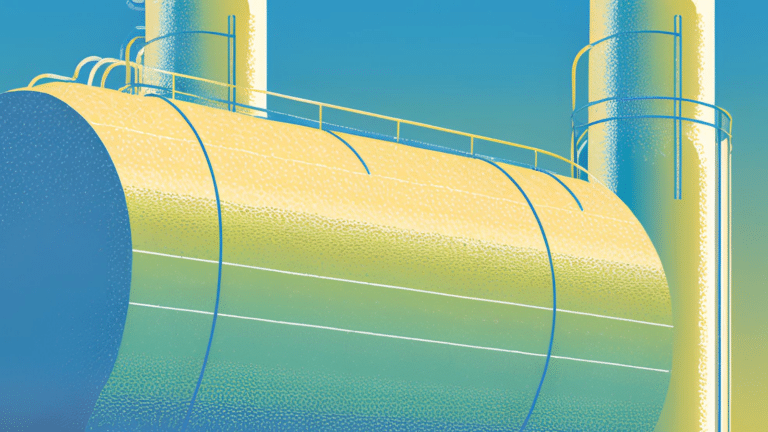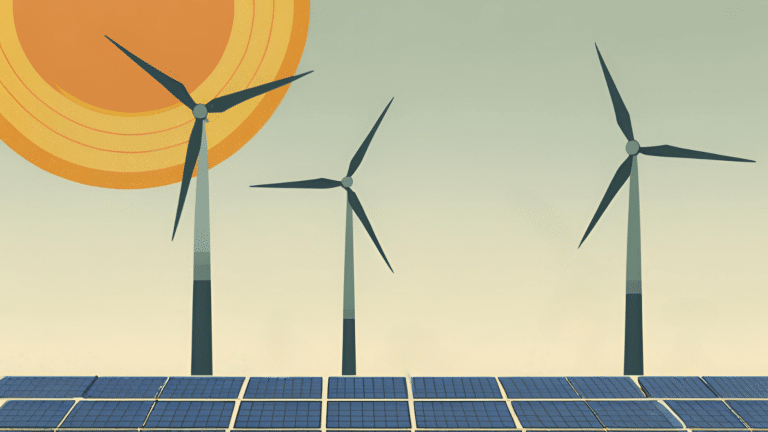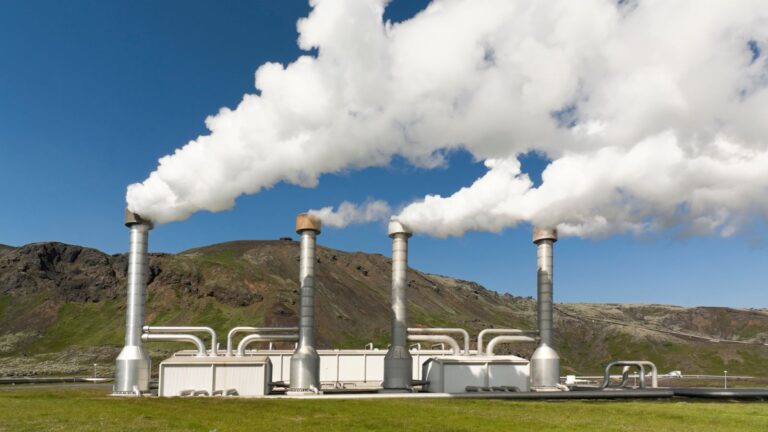China Halts U.S. LNG Imports Amid Tariff War
China has ceased importing liquefied natural gas from the United States since early February, as the ongoing tariff war impacts energy trade.
Current Access Level “I” – ID Only: CUID holders, alumni, and approved guests only
Insights from the Center on Global Energy Policy
This Energy Explained post represents the research and views of the author. It does not necessarily represent the views of the Center on Global Energy Policy. The piece may be subject to further revision. Contributions to SIPA for the benefit of CGEP are general use gifts, which gives the Center discretion in how it allocates these funds. Rare cases of sponsored projects are clearly indicated.
For a full list of financial supporters of the Center on Global Energy Policy at Columbia University SIPA, please visit our website at Our Partners. See below a list of members that are currently in CGEP’s Visionary Circle. This list is updated periodically.
While Europe has long promoted both energy efficiency and renewable energy, recent European Union (EU) policies reflect an increased ambition regarding its energy transition. Key instruments include the European Climate Law in 2021 (European Union 2021) and subsequent implementing measures—the comprehensive “Fit for 55” package (European Council 2023) and its reinforcement with the RePowerEU plan (European Union 2022a) in response to the war in Ukraine and related disruptions to energy supplies.[1] These policies include a clear integration of renewable energy in the context of the European taxonomy on sustainable activities (European Commission 2023a).
The Latin America and Caribbean (LAC) region has a chance to be a crucial partner for the EU in this transition, thanks to several LAC countries ranking high in terms of solar photovoltaic (PV) (World Bank 2020) and wind electricity potential (World Bank 2019). Solar and wind deployments in the region are consolidating LAC’s position as a world leader in the share of renewables in electricity generation mix: 61 percent in 2021 (OECD et al. 2022).
This article is the latest in the authors’ series assessing the potential for climate collaboration between the EU and LAC regions, and follows their analyses of opportunities in e-mobility and the Carbon Border Adjustment Mechanism (CBAM) cooperation.
Several European policies specifically target an increase in reliance on renewable energy and energy efficiency. They aim to address:
At the same time, increased reliance on energy efficiency and renewable energy (in particular, renewable electricity) is seen as a crucial pillar for future growth opportunities in the EU. Reasons include the technological progress that is driving cost reductions for wind electricity, PV, and batteries, as well as risks and costs related to fossil fuel supply. Cuts by OPEC+, in particular during Covid-19 (IEA 2020, McNally 2020), and the war in Ukraine have added to these concerns.
Renewable energy and energy efficiency will create greater capacity in the EU to structurally decouple economic growth from fossil energy demand, as well as greenhouse gas (GHG) and other pollutant emissions.
Supportive policies include landmark instruments like:
In the LAC region, emblematic examples of significant wind and solar deployment include projects in Brazil, Chile, and Uruguay (Ember 2023a). Hydropower is a significant source of the region’s electricity—accounting for more than 70 percent in Paraguay, Ecuador, Colombia, and Costa Rica, and more than 50 percent in Peru and Brazil (Ember 2023b).
The high renewable energy endowment of LAC countries offers possibilities for cooperation with the EU, given European interest in mitigating risks associated with strategic energy-related dependencies. According to the recently released “New Agenda for Relations between the EU and Latin America and the Caribbean,” the EU’s Global Gateway, a facilitator of a stronger strategic partnership between the EU and LAC countries, can be an important vehicle for investments in LAC, while supporting Europe with a secure supply of affordable and clean energy (European Commission 2023g). This may also be a key opportunity for the LAC region to access European technologies, capital, and goods, especially those aligned with its industrial development goals and environmental benefits.
Wind electricity: Europe has a significant presence in the global industry value chain, while it imports many of the raw materials needed for generators, especially from China (European Union 2022b). Latin America has significant growth potential in terms of new capacity to be installed (especially in the Southern Cone), mineral availability, and domestic production of wind turbine components. Combining European and LAC assets could be mutually beneficial, leading to industrial development and installation of new capacity at competitive electricity production costs.
RFNBOs: The vast renewable energy potential of Latin America, combined with Europe’s intention to become a leading producer of solid oxide electrolyzers (although the market is still small),[5] offers LAC countries opportunities to become part of this value chain.[6] This includes, in particular, the EU “Hydrogen Supply Corridors.” Seizing these opportunities would likely require a focus on the market for hydrogen derivatives, more suitable for transport by ship (despite greater energy losses for RFNBO production) as the trade volumes for long-distance transport of molecular hydrogen are likely limited to pipeline transport (Kneebone and Piebalgs 2023, Cazzola et al. 2023). This aligns with the “New Agenda for Relations between the EU and Latin America and the Caribbean,” which mentions Chile, Argentina, and Uruguay in the context of EU investments, through Global Gateway, in hydrogen projects (European Commission 2023g).
Advanced biofuels: While advanced biofuels—based mainly on non-recyclable waste and residues—are only just emerging as a sector,[7] the EU already hosts a cluster of early commercial plants (European Union 2022b, Hurtig et al. 2022) and Latin America is both a major biofuel producer and a region housing significant waste feedstock resources (International Energy Agency 2023b).[8]
Products with low embedded carbon: LAC can also seize opportunities arising from low-cost domestic production of semi-finished and finished products that need renewable energy for manufacturing. This would offer advantages to its domestic industry relative to the export of low-carbon energy carriers.[9] This is especially relevant for products that are directly affected by CBAM, such as fertilizers, chemicals, and low-carbon forms of virgin steel.[10]
Solar panels: LAC countries could potentially benefit from the public and private funding of the PV industry in Europe, driven in part by the EU’s solar strategy. The EU is an innovator in the field, with a significant number of publications and patent applications recorded (European Union 2022b), potentially offering LAC an opportunity to share the benefits arising from this competitiveness. Progress in this direction could help develop an LAC-based solar panel manufacturing supply chain.
This series has highlighted potential areas of collaboration between Europe and Latin America and the Caribbean. The suggested areas for action are rooted in a shared commitment to decarbonization and in a partnership guided by democratic values and multilateralism. An ambitious climate and sustainability agenda—along with investing in research, innovation, and skills, in addition to improved governance— has potential to unlock win-win opportunities for both regions. The benefits could range from economic diversification to investments in key technologies to resilient supply chains.
All this, however, will require a new mindset. To seize opportunities, both regions need to be aligned in terms of the policy choices required to reduce GHG emissions. Importantly, outcomes will not only depend on choices by single governments, but also on the extent to which these decisions will be collectively taken. Cooperation between the EU and LAC regions could also offer lessons to other global regions that are implementing ambitious climate policies while being exposed to opportunities and challenges from the energy transition.
CGEP’s Visionary Circle
Corporate Partnerships
Occidental Petroleum Corporation
Tellurian Inc
Foundations and Individual Donors
Anonymous
Anonymous
the bedari collective
Jay Bernstein
Breakthrough Energy LLC
Children’s Investment Fund Foundation (CIFF)
Arjun Murti
Ray Rothrock
Kimberly and Scott Sheffield
Cazzola, Pierpaolo, Gerard, Frank, Gorner, Marine, Gibbs, Mark, Young, Katrina (2023), Research for TRAN Committee: Assessment of the potential of sustainable fuels in transport, https://www.europarl.europa.eu/thinktank/en/document/IPOL_STU(2023)733103
Clean Hydrogen Partnership (2023), Accelerating the hydrogen economy: additional funding of €200 million available for the Clean Hydrogen Partnership through Repower EU, https://www.clean-hydrogen.europa.eu/media/news/accelerating-hydrogen-economy-2022-05-18_en
Ember (2023a), Global Electricity Review 2023 – Supporting material, https://ember-climate.org/insights/research/global-electricity-review-2023/#supporting-material
Ember (2023b), Electricity Data Explorer, https://ember-climate.org/data/data-tools/data-explorer/
European Commission (2023a), EU taxonomy for sustainable activities, https://finance.ec.europa.eu/sustainable-finance/tools-and-standards/eu-taxonomy-sustainable-activities_en
European Commission (2023b), Renewable Energy Directive, https://energy.ec.europa.eu/topics/renewable-energy/renewable-energy-directive-targets-and-rules/renewable-energy-directive_en
European Commission (2023c), Energy Efficiency Directive, https://energy.ec.europa.eu/topics/energy-efficiency/energy-efficiency-targets-directive-and-rules/energy-efficiency-directive_en
European Commission (2023d), EU Emissions Trading System (EU ETS), https://climate.ec.europa.eu/eu-action/eu-emissions-trading-system-eu-ets_en
European Commission (2023e), Electricity market design, https://energy.ec.europa.eu/topics/markets-and-consumers/market-legislation/electricity-market-design_en
European Commission (2023f), Trans-European Networks for Energy, https://energy.ec.europa.eu/topics/infrastructure/trans-european-networks-energy_en
European Commission (2023g), Joint communication to the European Parliament and the Council – A New Agenda for Relations between the EU and Latin America and the Caribbean, https://eur-lex.europa.eu/legal-content/EN/TXT/HTML/?uri=CELEX%3A52023JC0017
European Commission (2023h), Commission outlines European Hydrogen Bank to boost renewable hydrogen, https://energy.ec.europa.eu/news/commission-outlines-european-hydrogen-bank-boost-renewable-hydrogen-2023-03-16_en
European Council (2023), Fit for 55, https://www.consilium.europa.eu/en/policies/green-deal/fit-for-55-the-eu-plan-for-a-green-transition/
European Parliament (2023), Renewable energy, https://www.europarl.europa.eu/factsheets/en/sheet/70/renewable-energy
European Union (2020), Commission Implementing Regulation (EU) 2020/1294 of 15 September 2020 on the Union renewable energy financing mechanism, https://eur-lex.europa.eu/legal-content/EN/TXT/?uri=CELEX:32020R1294
European Union (2021), European Climate Law, https://eur-lex.europa.eu/legal-content/EN/TXT/?uri=CELEX:32021R1119
European Union (2022a), REPowerEU Plan, https://eur-lex.europa.eu/legal-content/EN/TXT/?uri=COM%3A2022%3A230%3AFIN&qid=1653033742483
European Union (2022b), Report from the commission to the European Parliament and the Council – Progress on competitiveness of clean energy technologies, https://eur-lex.europa.eu/legal-content/EN/TXT/?uri=CELEX%3A52022DC0643&qid=1669913060946
Hurtig, O., Buffi, M., Scarlat, N., Motola, V., Georgakaki, A., Letout, S., Mountraki, A. and Joanny Ordonez, G., Clean Energy Technology Observatory: Advanced Biofuels in the European Union – 2022 Status Report on Technology Development, Trends, Value Chains and Markets, EUR 31287 EN, Publications Office of the European Union, Luxembourg, 2022, ISBN 978-92-76-58806-1, JRC130727, https://dx.doi.org/10.2760/938743
International Energy Agency (2023a), Hydrogen patents indicate shift towards clean technologies such as electrolysis, according to new joint study by IEA and EPO, https://www.iea.org/news/hydrogen-patents-indicate-shift-towards-clean-technologies-such-as-electrolysis-according-to-new-joint-study-by-iea-and-epo
International Energy Agency (2023b), Bioenergy, https://www.iea.org/energy-system/renewables/bioenergy
Kneebone, James and Piebalgs, Andris (2023), Are pipelines and ships an ‘either or’ decision for Europe’s hydrogen economy? Planning import lines for hydrogen and derivatives, RSC Policy Paper 2023/03, European University Institute, https://cadmus.eui.eu/bitstream/handle/1814/75533/RSC%20PP%202023%2003.pdf
OECD et al. (2022), Latin American Economic Outlook 2022 – Towards a Green and Just Transition, https://doi.org/10.1787/3d5554fc-en
World Bank (2019), Going Global – Expanding Offshore Wind to Emerging Markets, https://openknowledge.worldbank.org/server/api/core/bitstreams/04db13ea-547f-5d69-a4ad-0963d9dff06d/content
World Bank (2020), Global Photovoltaic Power Potential by Country, https://documents1.worldbank.org/curated/en/466331592817725242/pdf/Global-Photovoltaic-Power-Potential-by-Country.pdf
[1] The authors discussed some of these measures in their article on transport electrification, such as: the regulatory phaseout of vehicles emitting CO2 at the tailpipe and roll out of charging infrastructure; the revision of the energy efficiency and renewable energy directive (including, in this last case, specific measures for air and maritime transport); measures specifically targeted at the energy performance of buildings; the reform of the Emission Trading System, paired with the introduction of a Carbon Border Adjustment Mechanism; measures targeting emissions and removals from land use, land use change, and forestry; new rules on methane emissions in the energy sector; a proposal for a directive that revises energy taxation and a package specifically focused on hydrogen and decarbonized gases.
[2] In line with the importance of decoupling economic activity from health and environmental impacts.
[3] This is complemented by specific legislation regarding the energy efficiency performance of buildings and transport.
[4] This is complemented by the establishment of financing mechanisms supporting renewable energy investments by linking countries that contribute to the financing of projects (contributing countries) with countries that agree to have new projects built on their territories (host countries) (European Union 2020; European Parliament 2023).
[5] The EU is directing significant efforts toward decreasing the cost gap between renewable hydrogen and fossil fuels. For example, the European Commission is currently supporting major renewable projects—including two Important Projects of Common European Interest (IPCEIs), and setting targets to produce and import (10 Mt) renewable hydrogen by 2030 (European Commission 2023h). The European Commission also aims to accelerate electrolyzer manufacturing via its Electrolyser Partnership platform and the Net Zero Industry Act. Europe filed 28 percent of all international hydrogen patent families in 2011–2020 (International Energy Agency 2023a), and, in order to continue to remain competitive in this area of innovation, the European Commission has also increased hydrogen R&D funding via REPowerEU (Clean Hydrogen Partnership 2022). More ambitious renewable energy targets have been set that indirectly benefit hydrogen development, and clarity has been provided on additionality rules for RFNBOs.
[6] Currently Europe is still dependent on China, Russia, and South Africa for the supply of raw materials needed for the electrolyzers (European Union 2022b), but some LAC countries (Brazil, Chile, and Colombia) are already pursuing efforts to participate in this developments.
[7] Due to challenges related to technology readiness, cost, and competition for sustainably sourced feedstocks in other sectors, and therefore also a sector that may not be subject to large-scale expansion, unless these challenges can be effectively addressed by a combination of policy choices and technological and market-related developments (in particular with respect to what could enable substitution in sectors that compete for the same feedstock, and/or in the way the feedstocks can be made available, without causing environmental and/or social damages).
[8] Seizing this opportunity will require addressing the challenge of deriving biofuels from low-carbon pathways and sustainably sourced feedstocks. The attention to compliance with sustainable sourcing of feedstocks is especially relevant for bioenergy, given direct and indirect land use change impacts, adding to direct impacts from processing and conversion of biomass and other renewable energy feedstocks into transportable energy carriers.
[9] Arbache and Estevez (2023) consider that the abundance of low-cost low-carbon energy will become a driver of industrial location globally, a process they call “powershoring” (in contrast to offshoring, reshoring, nearshoring, or friend-shoring). In their view, the combination of resilience and efficiency of clean energy in LAC will attract export-oriented industrial plants into LAC. However, the needs in terms of investment, technology, and innovation can actually offset the energy advantages, making the insertion of the region in global value chains a contingent outcome.
[10] Despite investment risks due to unclear prospects for a scale-up in demand (in the absence of policies orienting demand in that direction) and also due to a likely increase in focus in increased efficiency in the way these products are utilized, their production cost could increase with a reduction in carbon intensity.
This Energy Explained post represents the research and views of the author. It does not necessarily represent the views of the Center on Global Energy Policy. The piece...

President Donald Trump has made energy a clear focus for his second term in the White House. Having campaigned on an “America First” platform that highlighted domestic fossil-fuel growth, the reversal of climate policies and clean energy incentives advanced by the Biden administration, and substantial tariffs on key US trading partners, he declared an “energy emergency” on his first day in office.

This Energy Explained post represents the research and views of the author. It does not necessarily represent the views of the Center on Global Energy Policy. The piece...

This Energy Explained post represents the research and views of the author. It does not necessarily represent the views of the Center on Global Energy Policy. The piece...


New government documents seek to align the climate disclosures of Chinese companies with national priorities and global best practices. Edmund Downie (Princeton U) and Erica Downs (Columbia U) write for Shuang Tan.
